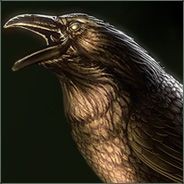Перевести текст: the earth the earth is a planet. it rotates on its axis, revolves around the sun and moves with the sun through space. the earth gets its warm and light from the sun. all around the earth is atmosphere. we breathe it, and it gives us our weather. the air is always moving. the movement of the air make our winds. small drops of water in the air form clouds. and as the clouds move about they brings us rain and storms. the equatorial diameter of the earth is 12 756 kilometers. the earth is like a sphere, but flat at the poles. this makes a difference of only 43 kilometers between the earth’s diameter at the equator and the diameter at the poles. the weigh of the earth is the figure 6 followed by 21 zeros if count in tons. the terrestrial globe revolves on it’s axis for 24 hours. when the terrestrial globe faces to the sun, we can see sunlight and we have day. when terrestrial globe turns away from the sun’s light, we have night. when our part begins to turn toward the sun and we see the first sunlight, we call it morning. when we are facing the sun most directly, it is noon. when the earth begins to turn away from the sun, we have afternoon and evening, and night. the average speed revolution of the earth round the sun is 29,8 kilometers per second. the small eccentricity the orbit of the earth does the little difference in the length of the seasons because of this variation. the number of days between the beginning of spring and of autumn, in the northern hemisphere is 186, but the number of days between the beginning of autumn and the beginning of spring is 179. the earth takes 365 ¼ days to travel around the sun. this makes our year. as the earth travels around, first one then the other is titled toward the sun. when the north pole tilts toward the sun, the rays of the world. it is warmer and it has its summer (june, july and august). it also has longer days, because it turns to the sun more of the time. when the south pole is toward the sun, the southern half of the world is warmer, and it has its summer (december, january and february). then the northern half is getting less direct sunshine, because it tilts away from the sun. it has shorter days. it has winter. the seasons between them we call spring and autumn.
292
477
Ответы на вопрос:
Земля земля - это планета. он вращается по своей оси, вращается вокруг солнца и движется с солнцем через пространство. земля получает свое тепло и свет от солнца. вся окружающая среда - атмосфера. мы дышим, и это дает нам нашу погоду. воздух всегда движется. движение воздуха создает наши ветры. небольшие капли воды в воздухе образуют облака. и когда облака двигаются, они приносят нам дождь и штормы. экваториальный диаметр земли составляет 12 756 километров. земля похожа на сферу, но плоская на полюсах. это составляет всего 43 километра между диаметром земли на экваторе и диаметром на полюсах. ветер земли - это цифра 6, за которой следует 21 нуль, если считать в тоннах. земной шар вращается на своей оси в течение 24 часов. когда земной шар обращен к солнцу, мы можем видеть солнечный свет, и у нас есть день. когда земной шар отворачивается от света солнца, у нас есть ночь. когда наша часть начинает поворачиваться к солнцу, и мы видим первый солнечный свет, мы называем это утром. когда мы смотрим на солнце самым непосредственным образом, это полдень. когда земля начинает отворачиваться от солнца, мы днем и вечером и ночью. средняя скорость вращения земли вокруг солнца составляет 29,8 километра в секунду. небольшой эксцентриситет орбиты земли делает небольшую разницу в длительности сезонов из-за этой вариации. число дней между началом весны и осенью в северном полушарии составляет 186, но количество дней между началом осени и началом весны составляет 179. земля занимает 365 ¼ дней, чтобы путешествовать по солнцу. это делает наш год. по мере того, как земля движется вокруг, сначала одна, а другая - к солнцу. когда северный полюс наклоняется к солнцу, лучи мира. он теплее и имеет свое лето (июнь, июль и август). у этого также есть более длинные дни, потому что он больше поворачивается к солнцу. когда южный полюс приближается к солнцу, южная половина мира более теплая, и у нее есть лето (декабрь, январь и февраль). тогда северная половина получает меньше прямого солнечного света, потому что она отходит от солнца. у этого есть более короткие дни. зима. временами между ними мы называем весну и осень.
1. it was a hot day. 2. i don’t like coffee, but i like tea. 3. i would like to travel to spain. 4. paul was the only person who remembered me. 5. breakfast is the most important meal of the day. 6. on sunday we have no trainings. 7. catherine loves cats. 8. the dniper is a very important waterway. 9. this is a very famous actor.
Популярно: Английский язык
-
You shouldn t invite Peter to your party. Peter shouldn t be invited to...
 kornoliya06.11.2022 15:19
kornoliya06.11.2022 15:19 -
Choose the correct variant. I didn t want anybody... A)made us to support...
 sasharyabukhina21.02.2020 00:23
sasharyabukhina21.02.2020 00:23 -
and the join 8.6.17.1 1 2 Work in pairs. How do these sentences differ...
 zubdau22.02.2023 13:55
zubdau22.02.2023 13:55 -
ЗДЕСЬ МАЛО БЫСТРЕЙ Write general questions for these sentences using the...
 tylkinavaleriya07.11.2022 21:46
tylkinavaleriya07.11.2022 21:46 -
You will hear five writers talking. Match the writers (1-5) to what they...
 smail52021.05.2022 02:00
smail52021.05.2022 02:00 -
Fill in the gaps with is,are,was or were. 1)bmw cars made in germany....
 нин123126.01.2022 13:33
нин123126.01.2022 13:33 -
Прочитать he gets up at half past seven in the morning...
 345801.04.2020 13:14
345801.04.2020 13:14 -
Вкаком предложении допущена грамматическая ошибка 1 you should go to help...
 anna2610201510.01.2021 02:03
anna2610201510.01.2021 02:03 -
Составить диалог на . встреча с поставщиком, обсуждение нового контракта.....
 MMPO06.02.2021 11:21
MMPO06.02.2021 11:21 -
Correct the word order in the sentences. 1.i like very much modern art....
 pragravra11.05.2020 22:24
pragravra11.05.2020 22:24
